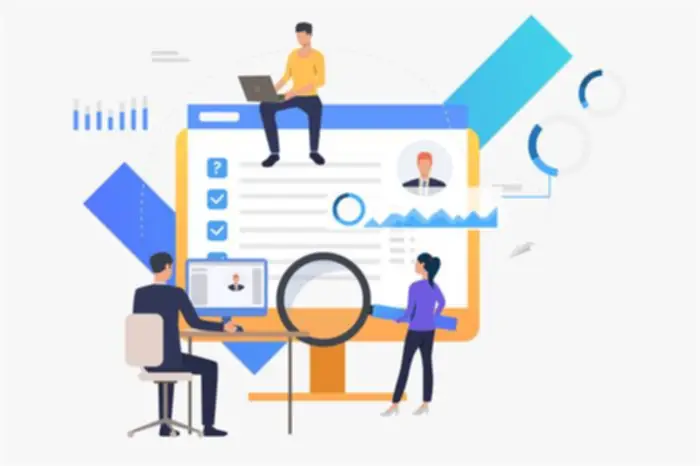SDLC Models or Software Development Life Cycle (SDLC) fashions are frameworks that information the development means of software program applications from initiation to deployment. Numerous SDLC models in software engineering exist, every with its approach to the phases of development. SDLC ensures a structured and arranged strategy to software program development, resulting in the creation of reliable and high-quality software program. It helps manage sources efficiently, reduces improvement time, and minimizes the risk of project failure. Earlier, the software improvement life cycle dealt with security as stand-alone work after testing, which resulted in late discovery or overlooked vulnerabilities. However due to DevSecOps methods, the system growth life cycle now handles security at every degree, not like traditional software program growth, which treats it as a definite course of.
The CHAOS Report from the Standish Group has demonstrated that scope creep, insufficient planning, and poor communication are widespread project challenges that end in project failures or overruns. Therefore, improving project administration practices and stakeholder engagement is crucial for rising these success rates. Arguably the most popular SDLC model, the Agile growth mannequin promotes adaptive planning, evolutionary development, early supply, and steady improvement. It advocates flexible responses to adjustments and encourages frequent communication and collaboration amongst group members and stakeholders.
It allows making short reviews of each stage’s result and making use of some minor amendments. This loop permits specialists to return to the earlier part for a brief period. We won’t dive deep into the phases of each mannequin because they are pretty similar. While programmers fix bugs and add new features, a DevOps specialist plans, and schedules the continued launch.
- This stage involves identifying the system’s aims, defining the scope, setting timelines, and allocating necessary sources.
- Earlier, the software growth life cycle handled safety as stand-alone work after testing, which resulted in late discovery or missed vulnerabilities.
- They are divided into groups based on some components, and every approach has its strengths and weaknesses.
- When it’s time to determine on the software program growth method, there’s a powerful probability of getting confused over numerous options.
- The method focuses on establishing whether a business is viable by launching a product at the same time as gaining feedback.
We created this detailed system growth life cycle information in mild of this. It will cover its fundamental definition, phases, main software program engineering methods, and the most vital benefits and disadvantages it might possibly offer all through project growth. SDLC methodologies provide a structured course of for software program development.
The Agile model makes buyer satisfaction a precedence from the very beginning. Consequently, the project teams involved reply immediately to stakeholder suggestions all through the SDLC procedure. Finally, there’s the maintenance part, which happens over time after the product has been launched. This section offers with dealing with issues experienced by the customers/end-users while using the software program.

DevOps engineers use various instruments to achieve quicker product deployment — for instance, Jenkins, Docker, Git, and others. Programmers actively talk with the designers as a end result of the functionality have to be in preserving with the design. That’s why designers may artificial intelligence (AI) change one thing within the mockups, or devs may make minor modifications to the features’ implementation. These price estimates are necessary for setting budgets to insure that adequate sources are planned to avoid unplanned value overruns.

Execs & Cons Of Spiral Mannequin
In this model, a prototype of the tip product is first created, examined, and refined as essential. It is very helpful when the client’s necessities are not clear or well-understood at the outset. Deploying software involves a unique set of applied sciences primarily based on the supply code and operational platform. For internet, there are tons of choices https://www.globalcloudteam.com/, whereas, for smartphones, proprietary App stores are the current norm.
It enables regular incorporation of suggestions, which significantly reduces the time and prices required to implement adjustments. This is particularly important for big methods, which often are more difficult to check within the debugging stage. For instance, because the system analyst of Viti Financial Institution, you may have been tasked to look at the current info system. Prospects in remote rural areas are discovering difficulty to access the financial institution companies.
Stage 3 System Design
Products advance via this lifecycle based mostly on a combine of inside selections (like when to launch an MVP) and exterior forces (like shifting market demand). Tutorials Level is a leading Ed Tech company striving to offer the best studying materials on technical and non-technical topics. Safety is built-in throughout the whole SDLC, from construct to manufacturing, through using DevSecOps. Everybody involved in the DevOps value chain have responsibility for security underneath DevSecOps.
Maintenance/support
Agile isn’t a selected methodology however rather a set of rules and values outlined within the Agile Manifesto. The Agile Manifesto prioritizes people and interactions, working solutions, customer collaboration, and responding to change over inflexible processes and documentation. Several Agile methodologies, together with Scrum, Kanban, and Excessive Programming (XP), have been developed to implement these ideas. Both are integral to successful system growth, with the latter enjoying a vital function in translating high-level necessities into actionable design components. Without clear steering, you danger prioritizing the wrong duties or, worst of all, launching a product that doesn’t excite your target market.
Vital updates are made according to a selected schedule, and a few minor adjustments are carried out by a DevOps engineer regularly. Aside from the builders, PM plays an essential position by controlling that the documentation, system design, and different parts fall underneath the relevant requirements. He can additionally be responsible for managing teams and constant product supply. By the way, the frequency of communication between the programmers and other details related to the collaboration inside a staff are additionally defined by the SDLC mannequin. Whereas planning all particulars, the project manager should choose the model in accordance with the group size, working schedule, etc. It is troublesome to incorporate modifications or customers’ suggestions since the project has to return to one or more earlier phases, leading teams to turn out to be risk-averse.
Following the Waterfall methodology, a project development group needs to finish every section step-by-step. Each successive phase of the SDLC process relies on the knowledge gained from the preceding one. The Software Program Improvement Life Cycle (SDLC) is a systematic, multistep, iterative course of for building and delivering software purposes. Development groups depend on a system improvement life cycle to create dependable software with as few points as possible.
For example, the V-model — verification and validation — requires a well-defined timeline and clear requirements, which leaves little room for unintentional delays. Sure fashions — such as Agile — work higher than others for initiatives with unclear necessities. This step includes decomposing the system into items, analyzing project targets, breaking down what must be created, and fascinating users to outline requirements. Upkeep is an ongoing phase the place the system is monitored, maintained, and updated as needed.
System Design is an important stage in the SDLC as it bridges the hole between requirements analysis and system improvement. It transforms person wants and useful specs into an in depth technical plan that guides the event team. Correct system design ensures that the developed system aligns with the specified functionality, performance, and scalability necessities. The Design part interprets the requirements gathered during Evaluation into a detailed technical blueprint. This contains designing the system’s architecture, database models, user interfaces, and defining system parts. The consequence of this phase offers the technical structure needed table state to guide the upcoming growth and implementation actions.